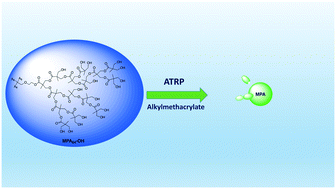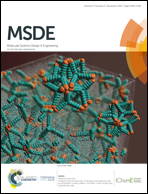Molecular design and shear stability correlations of dendritic polymethacrylates†
Abstract
Highly branched poly(alkyl methacrylate)s with and without crystalline polycaprolactone segments were designed and prepared via a core-first strategy from commercially available hyperbranched cores, then evaluated with respect to their rheology and shear stability performance. The main focus of this work was to study the effect of branching on mechanical shear stability, as it relates to the durability of viscosity index improvers. A secondary goal was to study the influence of the side chain length and polycaprolactone segment on rheology and shear stability. The polymers were prepared from 16, 32, 64-arm functionalized macroinitiators then subsequently subjected to ARGET-ATRP (activator regenerated by electron transfer – atom transfer radical polymerization) conditions with dodecyl methacrylate (DMA) or 2-ethylhexyl methacrylate (EHMA). The inclusion of polycaprolactone appears to have enhanced the viscosity index in several samples. Although hyperbranching is thought to increase shear stability, several analogs provided competitive viscosity index (VI) values as well. The caprolactone (CL) hard segments appeared to have a detrimental effect on shear, as compared to their non-CL counterparts. Surprisingly, EHMA showed decreased shear stability versus DMA analogs, despite the shorter polymer side chain (C6 versus C12) and presumably less side-chain entanglements. Overall, the trend is very clear for non-CL polymers, with shear stability increasing as arm number increased from 16, to 32 to 64, despite the substantial increase in molecular weight.



 Please wait while we load your content...
Please wait while we load your content...